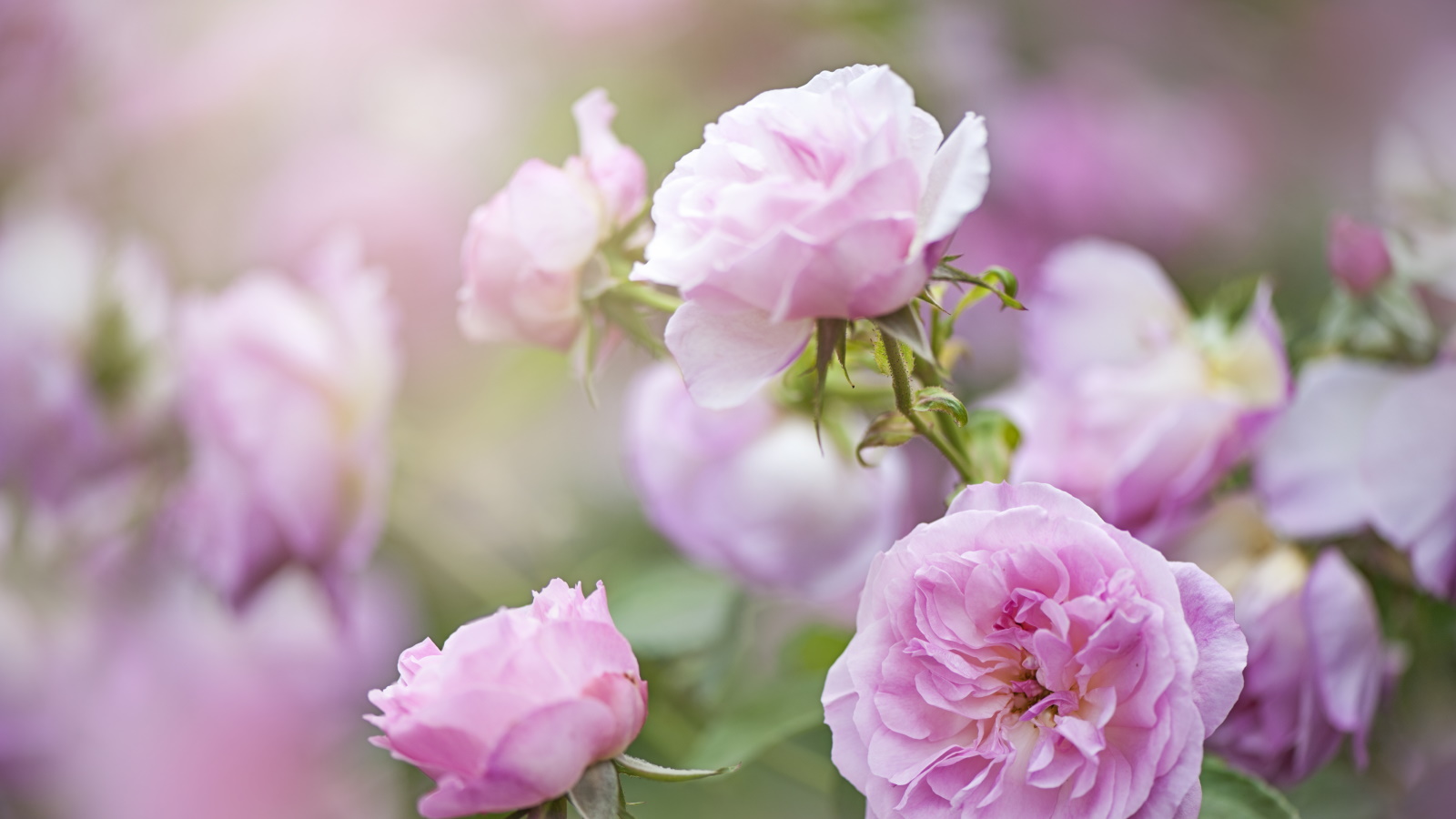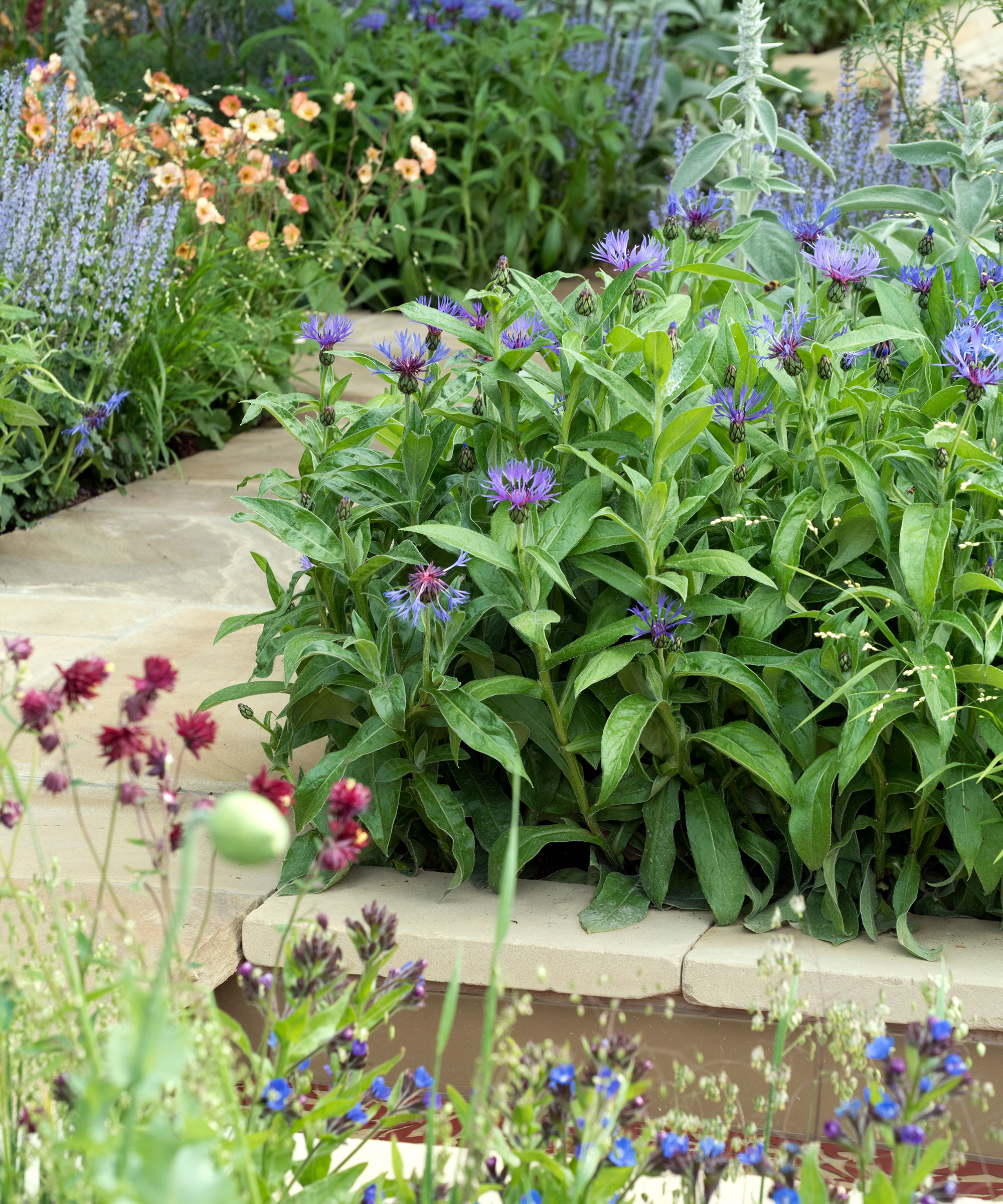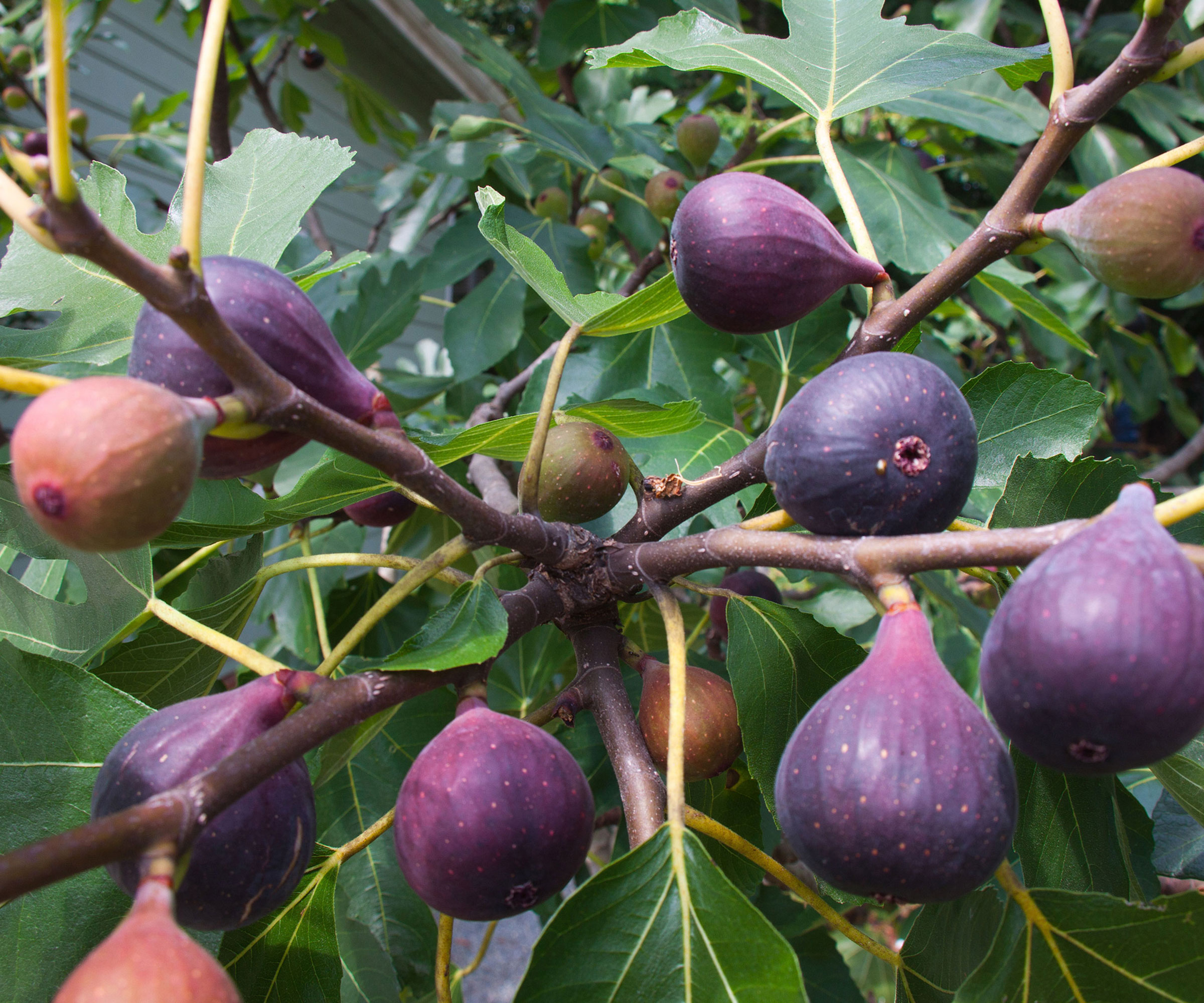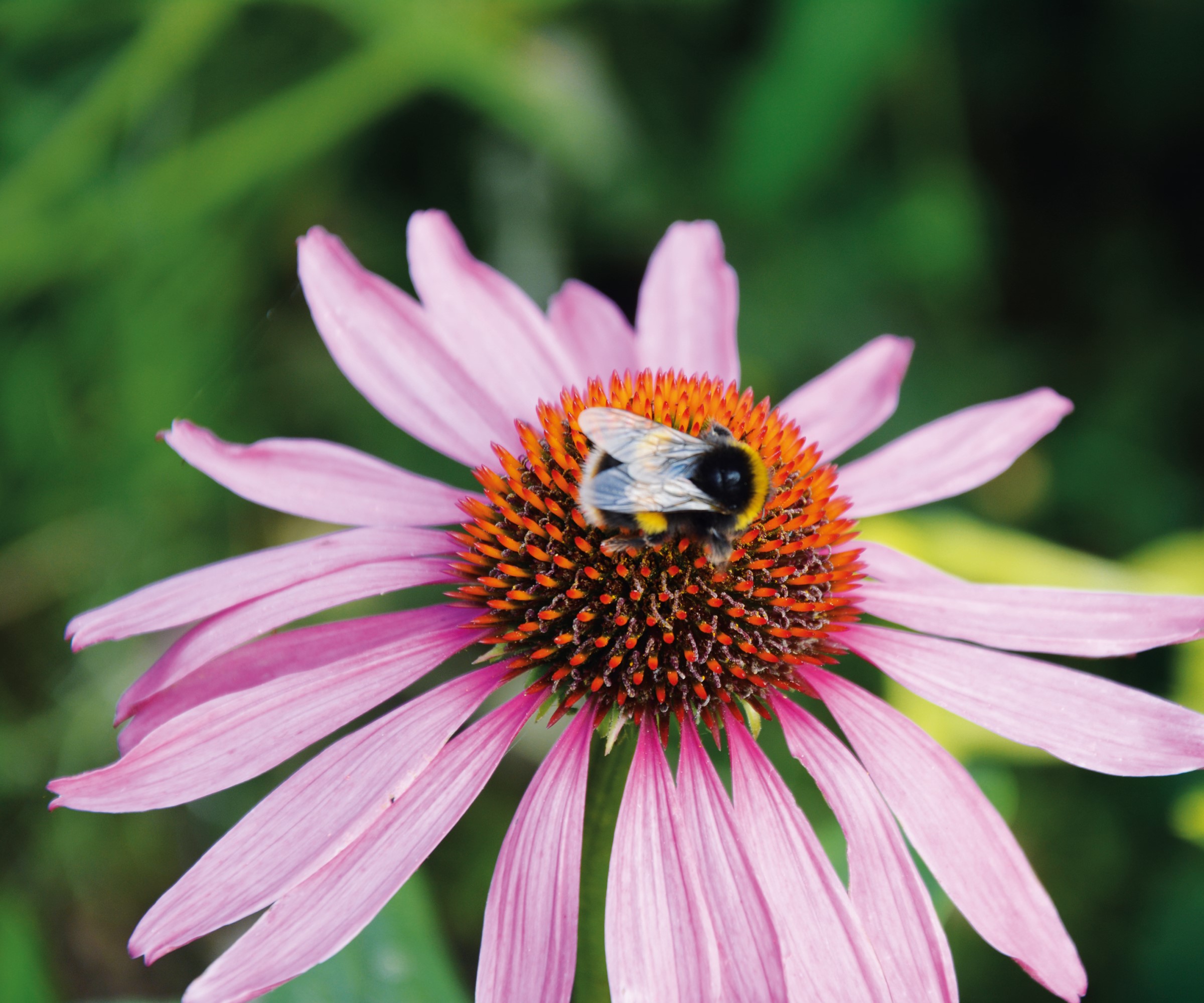US hardiness zone 8 explained for gardeners
Discover how to garden and which plants will thrive in US hardiness zone 8


Winter frost kills plants – to be precise, winter frost kills plants that are not adapted to cope with the low temperatures. And, while some plants will be affected by just a few degrees of frost, there are others that will happily endure the most chilling northern winters and shoot again in spring. But how do we choose the right plants, the plants that will be happy in the conditions in our yard in US hardiness zone 8? We all need a little guidance, advice on which trees, shrubs, perennials and other plants are naturally adapted to the winters in our individual situations.
The USDA has consulted the records of the average lowest winter temperatures from thousands of weather stations across the country and they’ve turned all this information into a map – the US Hardiness Zones Map. Areas with similar lowest winter temperatures are shown in the same color on the map, revealing a series of color bands – from zone 1 to zone 13 across the country.
So far, so good. In parallel, the American Horticultural Society along with botanical gardens, nurseries and expert horticulturalists, have determined how much winter cold individual garden plants will tolerate – and assigned them a rating. These ratings are noted on plant tags, on websites, in catalogs and in books and magazines. So it’s simple: choose the plants whose hardiness rating matches your hardiness zone. Here, we take a closer look at what you can plant if you live in US hardiness zone 8.

US hardiness zone 8
This is the zone that provides good conditions for the widest variety of plants. In colder zones winter frost is a killer, in warmer zones those plants that appreciate a winter chill or cool summers grow poorly.
Of course, we’re dealing with nature so nothing is absolutely 100% guaranteed. For example, your lowest winter temperatures can be affected by the local presence of lakes, the sea, mountains, buildings and so on.
Gardening in zone 8

Zone 8 is suitable for a wide range of trees and shrubs, deciduous, needle evergreens and broad-leaved evergreens, grown for their foliage and their flowers. Many perennials and bulbs whose roots are vulnerable to frost can be left in the ground all winter and some annuals will also survive the winter outside
Also, in zone 8, a sunny wall provides just enough extra winter warmth to allow an even great range to be grown.
Design expertise in your inbox – from inspiring decorating ideas and beautiful celebrity homes to practical gardening advice and shopping round-ups.
- Choose plants rated as suitable for zone 8, but be flexible. Some plants rated as zone 9 may well succeed in suitable garden microclimates in zone 8 and including them in your choice will widen your range of options.
- As always, hoop houses and low tunnels can be helpful in extending the season for vegetables and herbs, and can even ensure that you have some pickings in mid-winter.
- Light spring frosts can easily damage early growth of perennials and shrubs – even roses – and this is the time when those old bedsheets you have stored away can be spread over to provide protection.
- A fall mulching will protect overwintering perennials and bulbs that are a little tender. Do not be tempted to mulch in spring as your mulch is likely to smother dwarf spring bulbs.
- Mature evergreen shrubs and small trees – in your own yard or nearby – can help create protected microclimates where borderline frost tender varieties can survive.
- Most fruit trees do well in zone 8, but frost can damage the blossom, ruining the crop. Choose later flowering varieties that have proved successful in your local area.
- As always, mulch is invaluable – bark, garden compost, composted leaves, gravel (in sunny, well-drained areas) all help alleviate winter chills while black plastic helps raise soil temperatures in spring before planting a veg garden.
The main features of zone 8

Average coldest winter temperatures in zone 8 fall to between 10F and 20F. Zone 8a has a minimum average temperature of 10-15F . Zone 4b has a minimum average temperature of 15F to 20F.
Zone 8 includes North and South Carolina, much of Georgia, Alabama, Missouri and southern Arkansas. It also stretches across central Texas into central Arizona and up the rest coast through California, Oregon and Washington state mainly west of the Rockies.
In zone 8, in many gardens, the soil freezes a little, thaws again and so on through the winter but rarely penetrates deeply. Whether tender bulbs such as dahlias overwinter undamaged can vary from one winter to the next and may also depend on whether you remember to much in fall.
The first frost date of the fall is usually about November 7 – November 28, the last frost date of the spring is usually about March 13 – March 28.
Plants for zone 8

Zone 8 provides conditions that suit the most plants, allowing you to grow the widest possible range of ornamentals and edibles. Many plants that grow naturally high in the mountains will grow well alongside some plants from almost subtropical areas.
Most plants from zone 4, zone 5, zone 6 and zone 7 are also suitable for zone 8.
Deciduous trees
Coral Bark Maple (Acer palmatum ‘Sango-kaku’) Classic tree for small spaces, with upright growth, coral pink bark and butter yellow fall color.
Sassafras tree (Sassafras albidum) Distinctive, lobed foliage. One of the best native trees for fall foliage color.
Also try: Stewartia (Stewartia pseudocamellia).
Evergreen trees
American holly (Ilex opaca) Makes dense pyramids of dark green foliage with red berries lasting into winter. Slow growing, but dependable.
Chinese windmill palm (Trachycarpus fortunei) The hardiest of all palms, steadily developing an unmistakable look with fan-like leaves up to 5ft across.
Also try: Italian cypress (Cupressus sempervirens).
Deciduous shrubs
Hydrangea: Reliable and easy-to-grow, look for varieties of PeeGee (H. paniculata) and Annabelle (H. arborescens) hydrangeas which are the easiest to prune. New varieties every year.
Viburnum: Many native and non-native varieties, with clusters of white spring flowers followed by berries in many colors.
Also try: Mock orange (Philadelphus).
Evergreen shrubs
Camellia: Exotic-looking with large double or single, winter or spring flowers in reds, pink and white set dark, gleaming foliage.
Privet (Ligustrum japonicum) Clusters of strongly scented, creamy flowers are set against dark, exceptionally glossy foliage and followed by black berries.
Also try: Fringe flower (Loropetalum).
Vines
Honeysuckle (Lonicera periclymenum) Fragrant and colorful summer flowering twiner, plant instead of the invasive Japanese honeysuckle.
Rose (Rosa) Zone 8 is perfect for climbing and rambling roses. They need tying in and careful pruning - but the color and the scent make them worth it.
Also try: Wisteria (Wisteria frutescens).
Ground covers
Rose (Rosa) Ground cover roses are ideal in sun and will flower for many summer months. Start with the Flower Carpet Series, in twelve colors.
Cranesbill (Geranium) Cranesbills, or hardy geraniums, are invaluable weed smotherers with upward facing saucer-like flowers for many summer months.
Also try: Lilyturf (Liriope).
Shade perennials
Hosta Indispensable for their huge variety of foliage patterns, in shady borders or containers, but beware of spring slugs.
Ferns: The lacy foliage of lady ferns (Athyrium) and male ferns (Dryopteris) is ideal in partnership with hostas or other broad foliage.
Also try: Hellebore (Helleborus).
Sun perennials
Perennial sage (Salvia nemerosa) The upright summer spikes of small purple, blue, pink or white flowers create a burst of color in early summer, with more to follow.
Tickseed (Coreopsis) Fine-leaved plants with daisy flowers, originally in yellow but now in a huge range or colors and color combinations.
Also try: Coneflower (Echinacea).
Spring flowering bulbs
Daffodil (Narcissus) Always recognizable, different varieties of these invaluable and easy-to-grow favorites now feature white, pink and orange flowers as well as the usual yellow.
Grape hyacinth (Muscari) Clusters of tiny rounded, purple, blue or white flowers are like elongated grape bunches.
Also try: Wood anemone (Anemone nemerosa).
Summer flowering bulbs
Dahlia (Dahlia) Spectacular flowers ranging from huge to tiny, grown from clusters of tubers that will survive zone 8 winters in some seasons, but not all.
Lilly (Lilium) Very hardy, rather scaly bulbs send up exotic looking, often heavily perfumed, summer flowers.
Also try: Foxtail lily (Eremurus).
Native shrubs
Creeping Juniper (Juniperus horizontalis) Naturally low and spreading, the short and sharp, blue-green needles make a splendid cover and come in many forms.
Blackhaw viburnum (Viburnum prunifolium) Flat clusters of white flowers are followed by berries that mature from pink through to bluish black – with red fall color.
Also try: Buffalo currant (Ribes odoratum).
Native perennials
Bee balm (Monarda) Strongly aromatic foliage is topped with tiered clusters of lilac, red or pink summer flowers in that are popular with bees.
Tall summer phlox (Phlox) Large, rounded or pyramidal heads of small, fragrant, flat-faced flowers are mainly red, purple, pink, or lavender shades or white.
Also try: Coneflower (Echinacea).
Annuals
Wax begonia (Begonia semperflorens) Glossy green or rich bronze foliage shows off the yellow-eyed red, pink or white flowers all summer. Keep moist.
Petunia: From strong-growing trailers and ground covers, to neat rounded plants for pots petunias are available all over.
Also try: Impatiens.
Vegetables
Corn: Start seeds in individual pots or cells in a little protection and plant out after the last frost. Always plant in blocks, rather than rows.
Tomatoes: Choose varieties intended to be grown out in the open and plant after your last frost.
Also try: Melons.
Fruits
Figs (Ficus carica) All figs thrive in zone 8, but the dwarf ‘Little Miss Figgy’ makes a superb deck plant in a container.
Meyer’s lemon (Citrus x limon ‘Meyer’) The hardiest and most dependable citrus for Zone 8, appreciates shelter from chilly winter winds.
Also try: Peach (Prunus persica).
Stretching over a vast area of the country, if you live in US hardiness zone 8 the choice of plants, vegetables and flowers you can grow is enormous. Whether you plan to create a fragrant moon garden or embark on some square foot gardening to grow vegetables, the options are vast.

Graham Rice is a garden writer who has won awards for his work online, and in books and magazines, on both sides of the Atlantic. He is a member of a number of Royal Horticultural Society committees and the recipient of the 2021 Garden Media Guild Lifetime Achievement Award. He gardened in Pennsylvania for 20 years, but has recently returned to his native England.